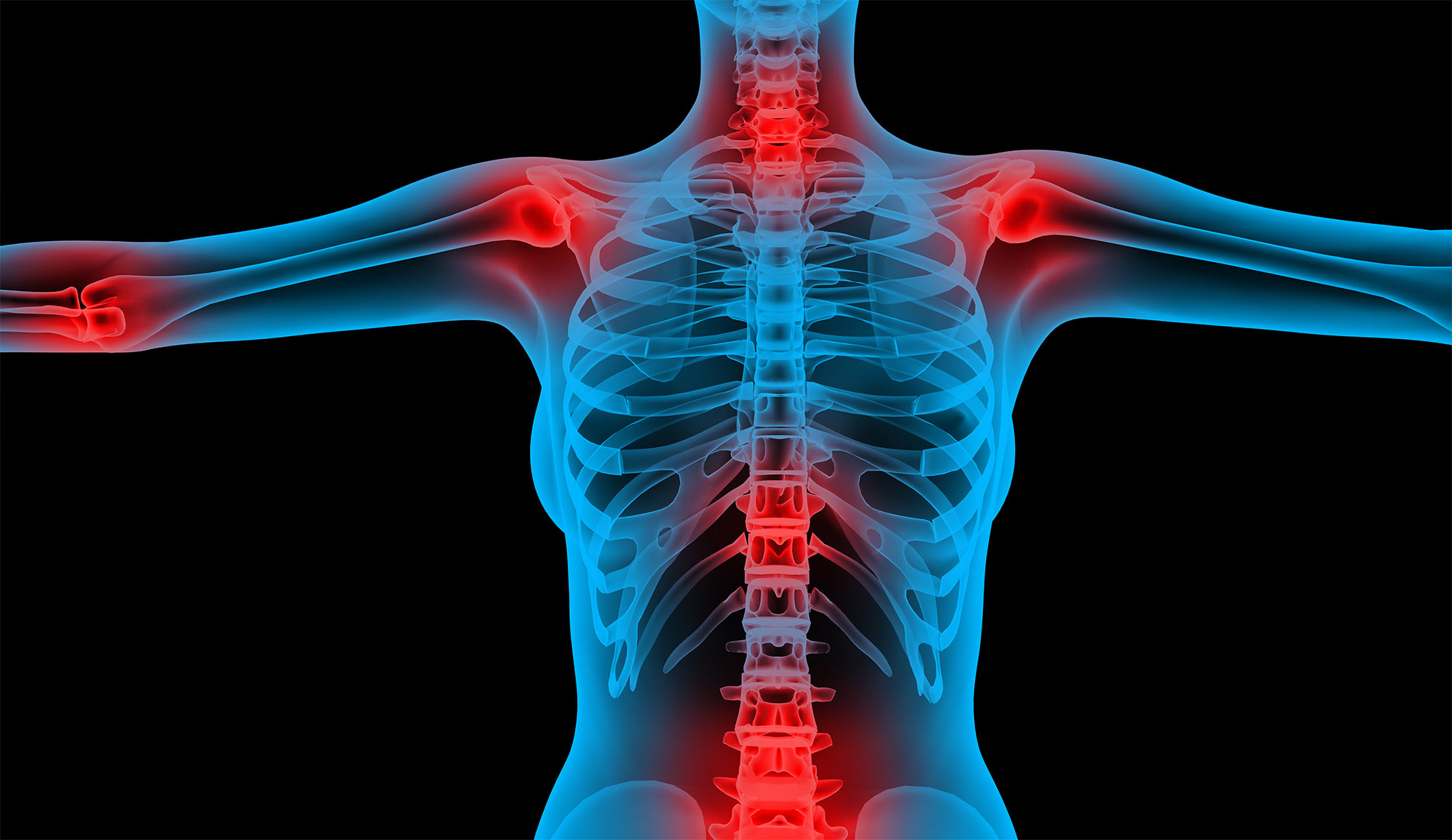Osteoporosis is a pain in the back–or neck–in more ways than one. This medical condition weakens the bones throughout the body, resulting in a vulnerability to fractures. Your bones are the centerpiece of your entire body. Without a strong, healthy skeleton, your health problems will only increase and lead to more pain.
Osteoporosis is not a condition that presents obvious symptoms early on. Unfortunately, this terrible condition affects women more often than men–so women need to be especially conscious of any early warnings that could progress into something bigger. Because it can exhibit subtle symptoms, here is some basic information about osteoporosis and a few early warning signs that you need to be on the lookout for.
 What Causes Osteoporosis?
What Causes Osteoporosis?
In a healthy individual, bones are constantly regenerating. New bone cells form to replace old cells as they break down. From childhood to adulthood, regeneration happens faster than the process of old cell breakdown, so you have more bone mass to support your body’s growth. Bone mass peaks around a person’s early twenties and then, as you age, that bone mass deteriorates faster than it is regenerated. If your body created a healthy amount of bone mass in your youth, you may be less likely to develop osteoporosis. However, if you have hereditary, dietary, or lifestyle factors in your background, you may be at risk for the condition.
Who Gets Osteoporosis?
You may be at risk for osteoporosis if your parents struggled with it, or if you’ve ever had to take cortisone long-term to treat another health problem. Osteoporosis is more common in women than men, especially women with small frames. Early menopause is another risk factor. Other factors that may contribute include:
- Demographics like age and race
- Eating disorders
- Hormonal, thyroid, and adrenal gland problems
- Low calcium intake levels
- Gastrointestinal surgery (it affects the absorption of nutrients)
- Cancer, epilepsy, gastric reflux and transplant rejection medications
- Other medical issues such as Celiac or Crohn’s disease, IBS, kidney and liver disease, lupus, multiple myeloma (cancer of the bone marrow or blood), and arthritis
As with almost all health conditions, lifestyle choices have an impact on the development of osteoporosis. Avoid smoking, drink alcohol in moderation, and get enough exercise.
What Are the Symptoms of Osteoporosis?
By the time symptoms appear, the condition has already progressed significantly. Signs to look out for include:
Frequent back pain due to fractured or collapsed vertebra. The pressure can pinch your nerves.
- Slow loss of height and stooping
- Unexpected bone fractures
- Bone pain, especially in the back and/or neck
Understanding Osteoporosis Fractures
In most cases, osteoporosis is dangerous because it causes spine or hip fractures when you fall. These injuries are serious and can be disabling, and some can even cause death. With osteoporosis, you can fracture your spine even without falling. When the vertebrae weaken and crumble, they press on top of each other, causing pain and shortening your stature.
If you’re concerned about your risk for developing osteoporosis, talk to your doctor. They can provide a bone density test to measure and benchmark the strength of your bones. Also, it’s a smart idea to add more calcium and vitamin D to your diet via dairy products, green leafy vegetables, high-quality supplements.
Your doctor may also prescribe medications to stop bone loss, strengthen your existing bone, and help you form new bone tissue. These treatments, however, take time. While you wait, consider getting a trainer or physiotherapist to teach you safe exercises support healing and build strength. Consult your doctor before to you take on a rough sport or activity, especially if you’ve already had some major injuries.


